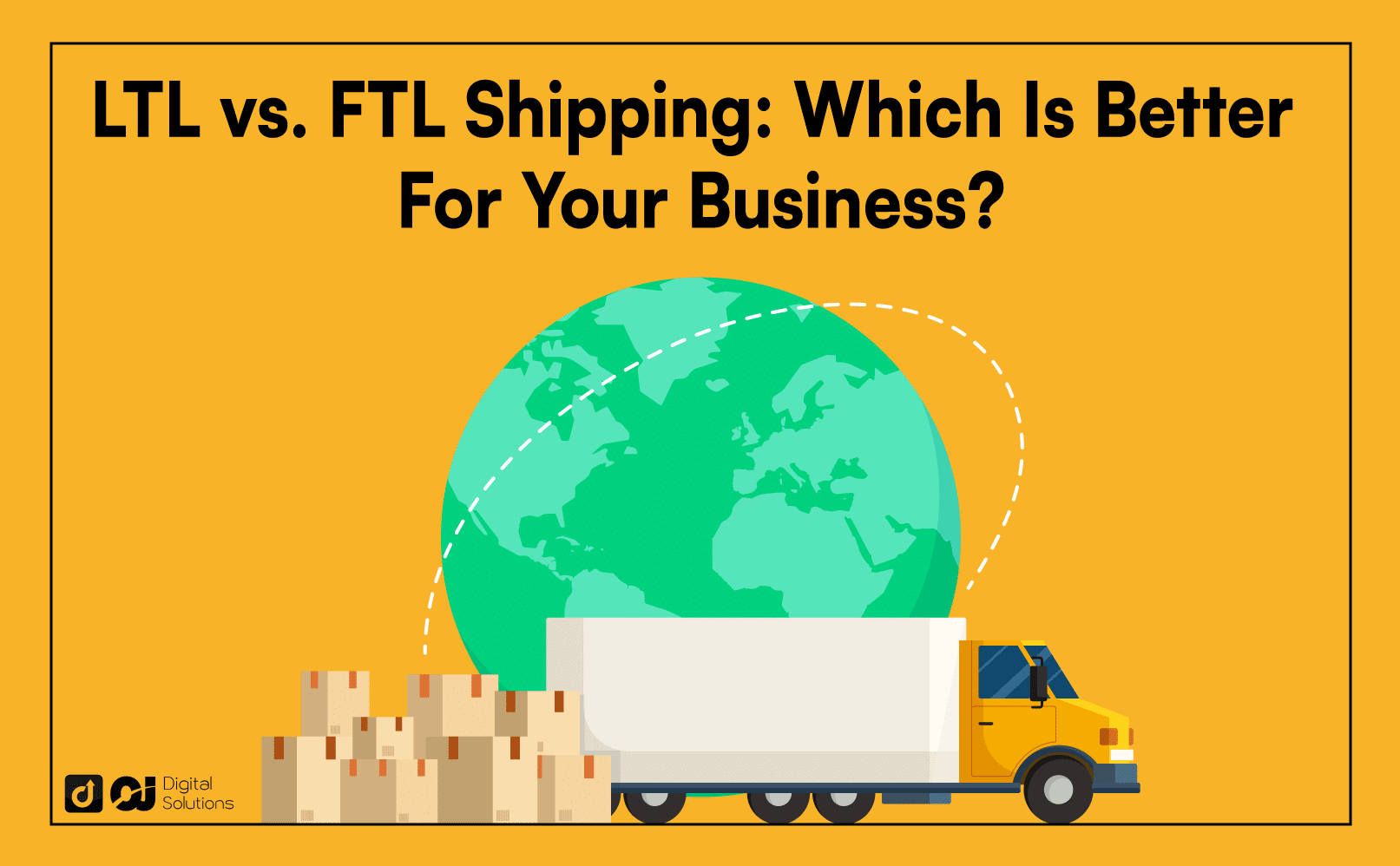Trucks were responsible for transporting 67% of domestic freight in 2019, making it the top shipping method by freight volume.
There’s no doubt a place for truckload shipping in your logistics strategy, but which method is right for you?
I’ll discuss the two most common trucking methods: LTL vs FTL.
What do LTL and FTL stand for? What can they do for your business?
I wrote this guide to discuss the FTL and LTL meaning, their differences, and their benefits.
Let’s begin.
LTL vs. FTL: Overview
Which is the best shipping solution for your business: FTL or LTL?
To help you decide, I’ve evaluated several factors that affect your choice.
LTL vs. FTL Rates
Shipment Size
Shipping Process
Delivery Speed
Environmental Impact
LTL vs. FTL: Quick Comparison
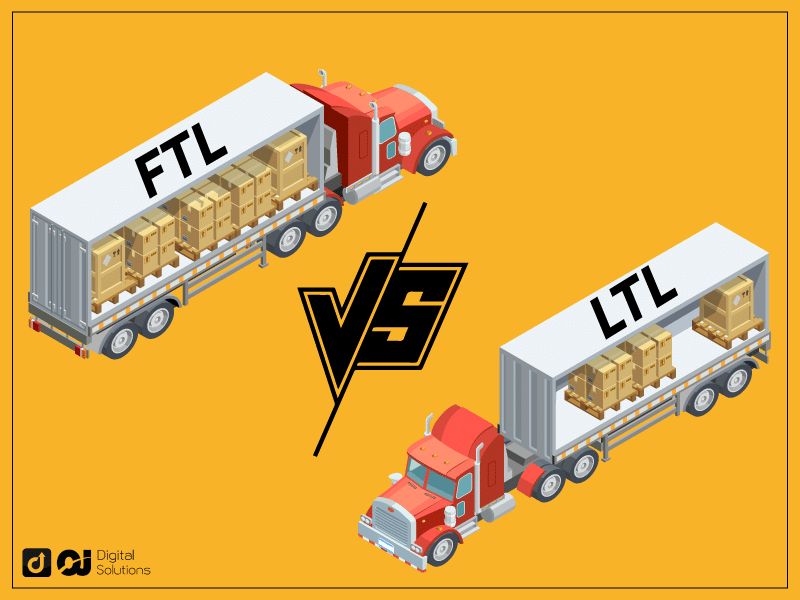
FTL and LTL combined cover most business needs; you can always use both options when necessary.
However, there are certain times when one is better than the other.
| LTL SHIPPING | FTL SHIPPING |
|---|---|
| 🚛 Low shipping cost | 🚚 Fast Delivery |
| 🚛 Customizable services | 🚚 Lower risks of damage and theft |
| 🚛 Small business-friendly | 🚚 Best for fragile items |
| 🚛 Less impact on environment | 🚚 Accurate delivery dates and times |
Before discussing their benefits, I’ll explain the difference between LTL and FTL freight shipping.
What Is LTL Freight Shipping?
LTL means less-than-truckload. LTL refers to shipping a relatively small freight that doesn’t occupy much of the truck’s space and weight limits.
You don’t pay for the whole truck; you only pay for what you use.
One truck goes to several locations to pick up multiple shippers’ freight. You share the space and cost with other businesses.
Here’s an overview of its benefits.
- LTL freight shipping allows small businesses and ecommerce stores to send packages frequently. You can ship your products quickly, minimizing bottlenecks in your business processes.
- Carriers offer other services that let you customize your booking. For example, you can book a liftgate or access a residential address if your freight requires it.
- While the transit time is its biggest weakness, it still falls within a reasonable timeframe.
What Is FTL Freight Shipping?
FTL refers to full truckload or simply truckload. In contrast to LTL, it’s a shipping method where the freight occupies the entire truck. Thus, you pay for using the entire trailer.
However, you can book an FTL shipping even if your freight shipment can’t maximize the entire truck space. The truck is exclusive for your business use for that booking, preventing your products from mixing with other shipments.
Here are FTL’s benefits.
- It’s better to rent a whole truck if you have fragile or sensitive freight. It doesn’t have to share space with other shipments, minimizing the damage risk during transit.
- The faster delivery speed allows your business operations to proceed more quickly and smoothly with minimal disruptions.
LTL vs. FTL: Feature-by-Feature Comparison
Here’s how these two shipping methods fare in each category.
Shipment Size
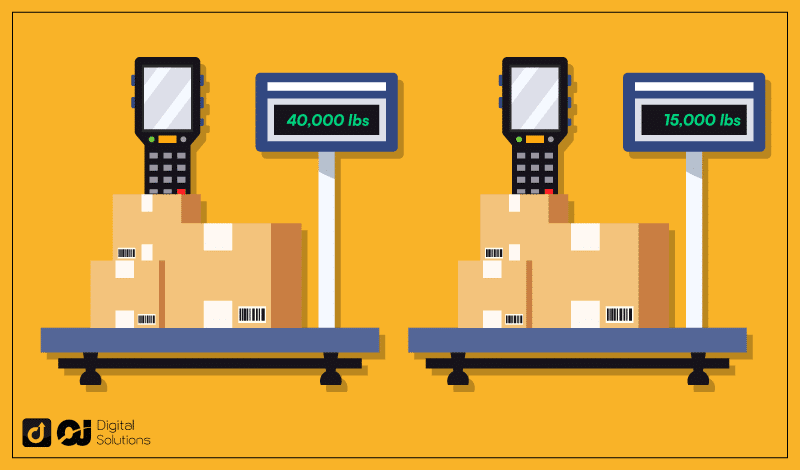
The primary difference between these two shipping methods is the shipment size.
You can use less-than-truckload (LTL) services for packages weighing 150 lbs. to 15,000 lbs, which translates to a few boxes up to a few pallets.
Large shipments with more than 20 pallets often fall under FTL shipping.
FTL shipments typically weigh around 20,000 lbs., but a trailer can carry up to 40,000 lbs. Semi-trucks can carry more than 45,000 lbs. with a legal limit of 80,000 lbs.
You may need a special permit when shipping FTL, and your freight shipment requires a bigger capacity.
Verdict:
It mostly depends on your shipping requirements.
- Use less-than-truckload if you have a smaller freight.
- Use full truckload if you have a larger freight.
Cost
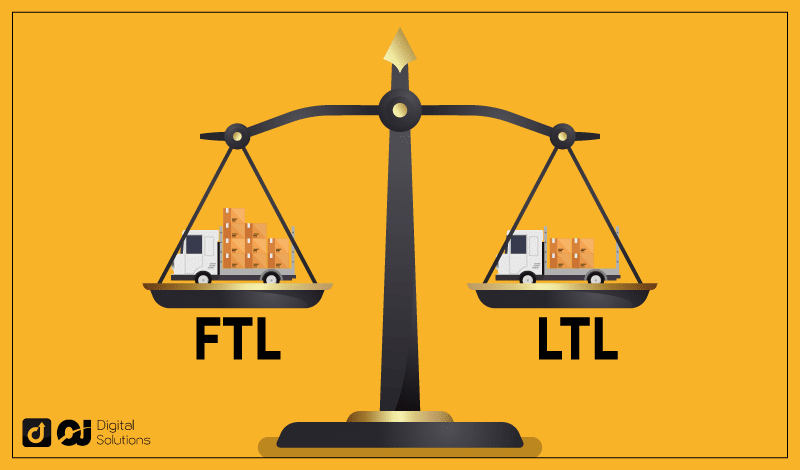
LTL is generally cheaper than FTL because you don’t have to pay for the entire truck space.
You can enjoy even more cost savings with LTL if you have smaller shipments, and renting a whole truck doesn’t make sense.
Your actual rate depends on several factors, including distance and add-on services.
However, less-than-truckload shipping relies more on the shipment’s freight class to calculate the cost.
An LTL carrier uses a standard freight classification system, classifying your shipment according to ease of handling and transporting. It’s not only about the size but also the weight, shape, and special handling requirements.
The easier it is to handle your package, the lower the freight class and the cheaper the LTL shipping costs.
FTL shipping doesn’t consider the classification when calculating the shipping rates. It’s mostly according to industry capacity and these factors,
- Equipment required
- Driver availability
- Transportation type
- Fuel costs
These factors can make an FTL shipment more cost-effective in some scenarios.
For example, the full truckload option is cheaper if your shipment occupies the entire truck (or most of it).
Some shipments are also too expensive to face unnecessary risks. If lost or late freight causes so much damage to your business operations, FTL might give you higher long-term total cost savings.
Verdict:
You can save more with LTL, especially if you don’t have enough shipments to fill a trailer.
Shipping Process
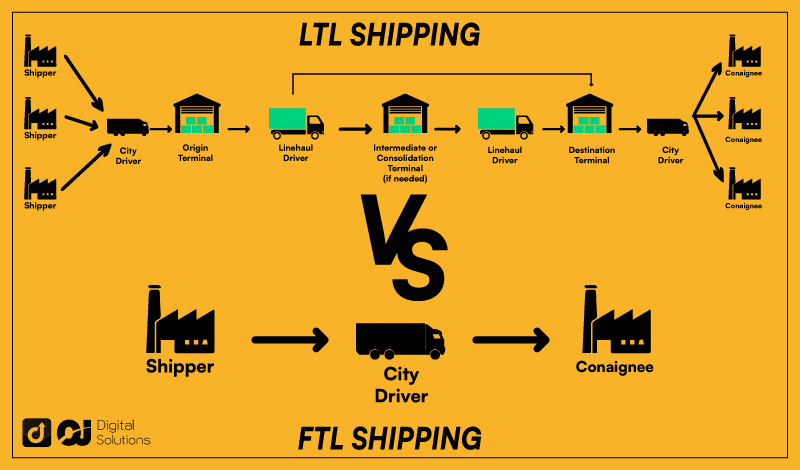
LTL carriers organize multiple pick-ups in a single trip. They strategically combine shipments from nearby shippers or those with the same destination.
After completing its rounds, the truck heads to a central hub. Here, your packages will transfer to another truck, heading to another distribution center to prepare for another transfer.
Expect your LTL freight to undergo multiple transfers and stopovers before it reaches its final destination.
LTL carriers choose the most optimal shipping route for them, which may not be ideal for you.
Meanwhile, FTL is a straightforward process. Once a truck picks up your goods, your entire shipment can quickly reach its destination.
Verdict:
FTL has a less complex route and process.
Risk of Damage, Theft, and Losses
The multiple stops in the LTL process can sometimes cause issues.
A long journey means plenty of handling, especially when the carrier reinspects your products. Significant handling equals higher risks for damage, theft, and losses.
Although most shipments arrive at their destination without a hitch, good packaging becomes more critical in LTL shipping.
FTL shipping doesn’t expose your package to unnecessary risks.
Unlike LTL shipping, full truckload delivery doesn’t reinspect the products. The handlers don’t break your shipment’s seal until it has reached the recipient’s delivery dock.
With full truckload shipping, carriers don’t have to handle your packages in and out of the truck multiple times. Limited handling reduces the likelihood of damage or loss.
Verdict:
Both have security precautions, but your shipment is generally safer from damage, theft, and loss with FTL.
Delivery Speed
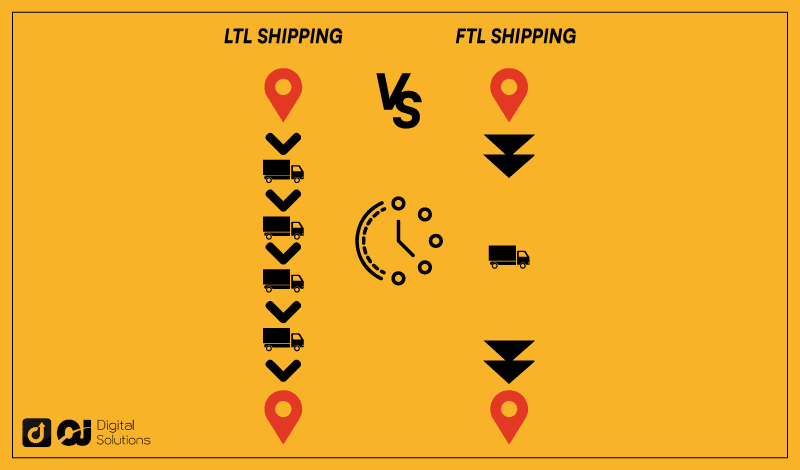
FTL is the faster option. It has an estimated delivery time of one to two days, whereas LTL shipping can take three to seven days.
Your LTL shipments have to stop by several locations. Although there’s an expedited shipping option, it’s still not as fast as a direct route from pick-up to drop-off. Thus, LTL shipments take longer to reach your customers.
Moreover, pick-up and delivery times are often unguaranteed. You have to be more flexible with your schedule and account for possible delays in the delivery date.
What if you have a small freight you need to deliver ASAP?
Your shipment weight doesn’t need to reach 15,000 or more for FTL to make sense.
FTL shipping is an excellent option when fast delivery is more vital than saving money.
It’s also more predictable because FTL carriers can calculate an accurate timeframe according to the route, estimated traffic, and other variables.
Barring accidents and other transportation issues, your shipment can arrive at the estimated delivery dates and times. The same goes for pick-ups. The FTL truck will drop by at the expected date and time, letting you plan your delivery appointments precisely.
Verdict:
Aside from being faster, full truckload delivery can help you better optimize your shipping strategy.
Environmental Impact

Did you know that your trucking choice can affect the environment?
Between LTL and FTL, less-than-truckload shipping is the more environmentally-conscious option. It combines separate shipments into a single journey, minimizing the number of trucks on the road.
Fewer trucks equate to a lower carbon footprint when considering fuel costs, labor, and emissions.
Verdict:
Less-than-truckload services create less impact on the environment.
Frequently Asked Questions (FAQs)
Are There Other Alternatives?
Although less-than-truckload and full truckload are the most common shipping methods, other options exist.
You also have parcel delivery, partial truckload, STL (shared truckload), and volume LTL, among others.
A shared truckload gives you the best of both worlds. It combines the cost-effectiveness of less-then-truckload shipping with the timely delivery speed of a full truckload.
Parcel delivery services using standard shipping, like FedEx, UPS, and USPS, are best for packages weighing less than 150 lbs.
Is Freight Classification Complicated?
Many LTL carriers use software to determine the freight class for your LTL shipments. All you have to do is provide the following information.
LTL shipment weight
Package dimensions
Fragility and other special features
If you provide the exact commodity specifications, the carrier can also provide accurate pricing. Otherwise, you may get an updated offer.
Carriers use a machine that automatically scans pallets and then compares its results with the information on the bill of lading.
The Bottom Line
Now that you know the differences between less than truckload vs. truckload (FTL), you can make better logistical decisions for your business.
There’s more to choosing between FTL vs. LTL other than shipment size. You can leverage both options when the situation calls for it.
It ultimately depends on your specific shipping needs and business priorities. It’s about efficiency rather than cost savings.
Review all your options, including other methods like STL and parcel delivery.
If cost savings is your goal, there are cheaper shipping methods.

